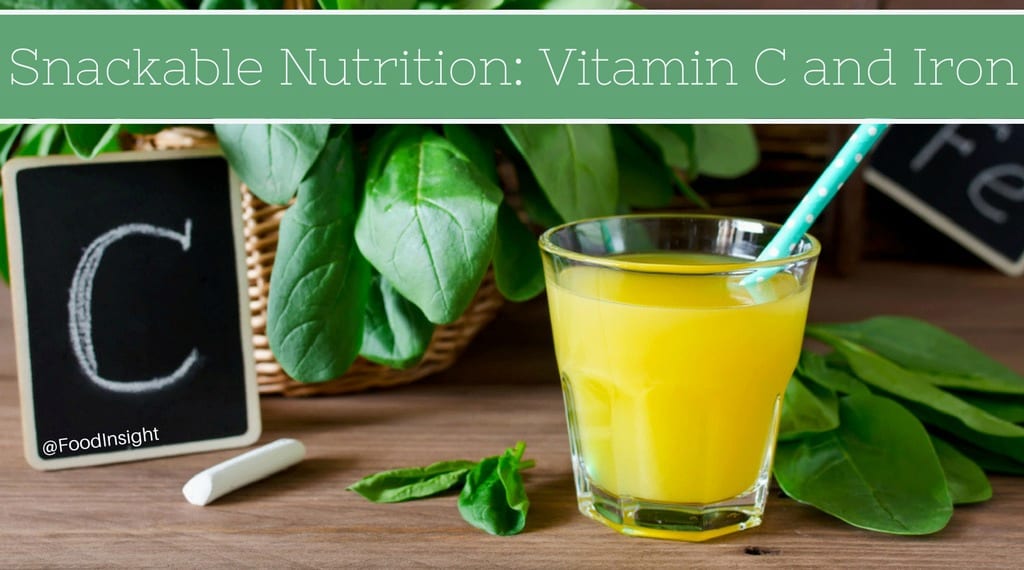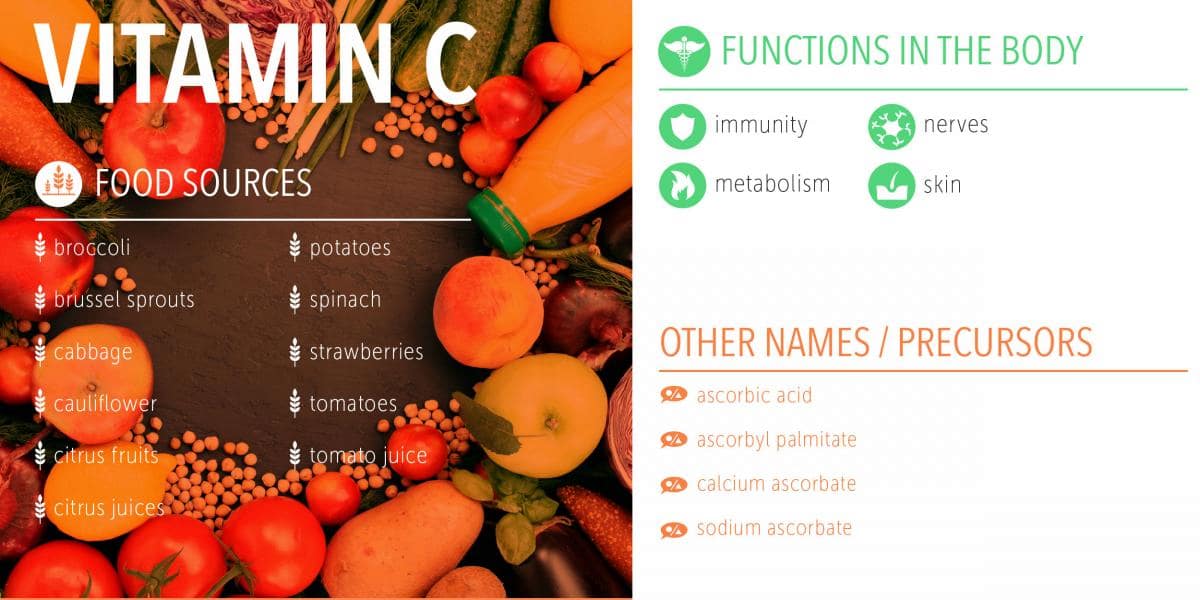When you think of vitamins and minerals, what is the first one that comes to mind? I know for me personally, it’s vitamin C. As an immunologist, it’s the micronutrient I get asked about a ton, especially around cold and flu season.
You might see vitamin C listed as ascorbic acid, ascorbyl palmitate, calcium ascorbate, or sodium ascorbate. Despite having different and sometimes difficult-to-pronounce names, they are the same thing.
Want to know another fun fact? Vitamin C helps with other micronutrient absorption, especially iron. Iron deficiencies are common among women, children, and vegetarians, so boosting iron levels through vitamin C supplementation is a good strategy to make sure these populations maintain adequate iron levels.
What are some health benefits of these specific micronutrients?
Vitamin C is a potent antioxidant, which can promote skin health and strengthen your immune system. Additionally, vitamin C is key for maintaining your metabolism and supporting your nervous system. Iron is critical for moving oxygen around the body, so iron mainly promotes cardiovascular health. Iron also plays a role in your body’s metabolism.
How much vitamin C should I aim for and what foods should I focus on?
Foods rich in vitamin C can be found in vegetables such as broccoli, Brussels sprouts, cabbage, cauliflower, potatoes, spinach, and tomatoes; fruits like citrus and strawberries; and juices like citrus juice and tomato juice. To better help you understand how much vitamin C you should be getting and how much of it is in certain foods, see the tables below.
Recommended Dietary Allowances (RDAs) for Vitamin C Institute of Medicine. Food and Nutrition Board. Dietary Reference Intakes for Vitamin C, Vitamin E, Selenium, and Carotenoids. Washington, DC: National Academy Press, 2000. | ||||
|---|---|---|---|---|
Age | Male | Female | Pregnancy | Lactation |
0–6 months | 40 mg* | 40 mg* |
|
|
7–12 months | 50 mg* | 50 mg* |
|
|
1–3 years | 15 mg | 15 mg |
|
|
4–8 years | 25 mg | 25 mg |
|
|
9–13 years | 45 mg | 45 mg |
|
|
14–18 years | 75 mg | 65 mg | 80 mg | 115 mg |
19+ years | 90 mg | 75 mg | 85 mg | 120 mg |
Smokers | Individuals who smoke require 35 mg/day | |||
* Adequate Intake (AI)
Food sources of vitamin C | Milligrams (mg) per serving |
Orange juice, ¾ cup | 93 |
Orange, 1 medium | 70 |
Strawberries, fresh, ½ cup | 49 |
Broccoli, cooked, ½ cup | 51 |
Brussels sprouts, cooked, ½ cup | 48 |
Cabbage, cooked, ½ cup | 28 |
Cauliflower, raw, ½ cup | 26 |
Tomato, raw, 1 medium | 17 |
Spinach, cooked, ½ cup | 9 |
Foods rich in iron include animal protein like fish, chicken, and beef. Bread, breakfast bars, cereals, fruits, and whole grain products also contain iron. To better help you understand how much iron you should be getting and how much iron is in certain foods, see the tables below.
Recommended Dietary Allowances (RDAs) for Iron Institute of Medicine. Food and Nutrition Board. Dietary Reference Intakes for Vitamin A, Vitamin K, Arsenic, Boron, Chromium, Copper, Iodine, Iron, Manganese, Molybdenum, Nickel, Silicon, Vanadium, and Zinc: A Report of the Panel on Micronutrients. Washington, DC: National Academy Press; 2001. | ||||
|---|---|---|---|---|
Age | Male | Female | Pregnancy | Lactation |
Birth to 6 months | 0.27 mg* | 0.27 mg* |
|
|
7–12 months | 11 mg | 11 mg |
|
|
1–3 years | 7 mg | 7 mg |
|
|
4–8 years | 10 mg | 10 mg |
|
|
9–13 years | 8 mg | 8 mg |
|
|
14–18 years | 11 mg | 15 mg | 27 mg | 10 mg |
19–50 years | 8 mg | 18 mg | 27 mg | 9 mg |
51+ years | 8 mg | 8 mg |
|
|
* Adequate Intake (AI)
Food sources of Iron | Milligrams (mg) per serving |
Breakfast cereals, fortified with 100% of the DV for iron, 1 serving | 18 |
White beans, canned, 1 cup | 8 |
Chocolate, dark, 45%-69% cacao solids, 3 ounces | 7 |
Lentils, boiled and drained, ½ cup | 3 |
Tofu, firm, ½ cup | 3 |
Beef, braised bottom round, trimmed to 1/8″ fat, 3 ounces | 2 |
Cashew nuts, oil roasted, 1 ounce (18 nuts) | 2 |
Chicken, roasted, meat and skin, 3 ounces | 1 |
Bread, whole wheat, 1 slice | 1 |
Spaghetti, whole wheat, cooked, 1 cup | 1 |
Tuna, light, canned in water, 3 ounces | 1 |
Since I tend to skew vegetarian during the week, I am happy to see how I can incorporate more iron into my diet. I’ll just make sure to pair my beans, legumes, or tofu with a vitamin C-rich food for maximum absorption. Sounds like a tofu stirfry is going to hit my weekly dinner rotation!


